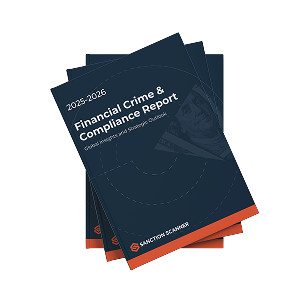With the great rise since 2018 of the financial market indices on Bitcoin, the world of cryptocurrencies, including the well-known Ethereum, has been experiencing strong growth in the last period, although some have suffered a sharp decline, losing as much as $15,000 in just under two weeks. But these are not the only attractive products now circulating on the markets, there are also the NPLs, a whole series of "financial instruments" that are generating great interest among economists and investors.
The subject of this study, however, lies in an ontological analysis, which has been taking place for some years now, almost as a contrast to cryptocurrencies, regarding the issuance and use of virtual currencies 'created' by States and issued and authorized by national Central Banks as an alternative to cash and the use of cryptocurrencies.
The first states to start a race towards issuing their own national digital currency were China and Sweden, with the e-currency reserving for forecasts of 2021 and 2022 an unofficial issuance of theirs subject to the consent of the IMF (International Monetary Fund), (and for Sweden) with a favorable outcome of the European Central Bank. Also adding to this record is the role of the United States, which plans to issue a digital dollar as early as 2021.
Characteristics and Operation
The characteristics of digital currencies are basically built using the same mathematical-computer algorithms for Blockchain 'coins', nothing new for what has already been done for Cryptocurrencies. Users will be given a wallet (in this case, digital; the user will have a URL address to access it and a private key) that will be personal to each user. The operation of this digital currency has as its aim or objective to replace the use of cash altogether, providing a virtual alternative to one's own currency and greater control over the proliferation of financial crimes.
Therefore, the digital euro will maintain the same financial quotation on the currency market as is established for euro banknotes. Moreover, it will have the same operational possibilities, such as use throughout Europe and in all Eurozone countries. Unlike before, it will be a centralized currency with continuous monitoring of an economic and security nature by the ECB and the national central banks. The European Parliament's rationale for introducing this new instrument is also important: it aims to reduce the phenomenon of an economic monopoly by private individuals in managing currencies and exchanges, who establish their own rules on their own account, outside of any contractual or civil law regulation, establishing how to exchange and at what price. European institutional sources expect to proceed with an initial trial of the digital euro as early as spring 2021.
The differences with cryptocurrencies lie in initiatives aimed at creating greater transparency. so much so that a register of senders and recipients will be used. In particular, the aim is to mitigate the financial risks associated with the use of cryptocurrencies since if the digital euro follows its path, its price value will be identical to that of cash, thus ruling out the risk of volatility.
Opportunities
Streamlining and greater efficiency in the timing of the exchange of financial transactions between banks (B2B), customers (B2C), and people (P2P), compared to common European payment instruments. Reduction of management and transfer costs, as the figure of the Middleman (intermediary) and of a bank, will be absent since it is the same Central Bank that manages the transactions. Further ecological savings are gained by not producing banknotes and their equivalent inks and certifications of regulatory reliability. Immediate support for the citizen with specific assistance apps according to the needs identified by the service user.
Greater control by the authorities over the nature, purpose, and counterparties of the economic transfer, thus allowing greater traceability. It goes without saying, that all these functions do not require the opening of a new economic account but the access to special applications on one's smartphone to proceed to payment transactions and the digital ID recognition of the user. Moreover, this digital identification system is also necessary to identify the user for anti-money laundering purposes in remote customer due diligence procedures.
The Risks
Unfortunately, as the saying goes, all that glitters is not gold. Such monetary policies bring great benefits but also disadvantages and risks, which I think should be listed:
- Social and financial inclusion: In many countries, we have citizens who, due to economic impossibility or age, have little familiarity and knowledge of IT tools and services and of these innovative tools. This creates economic and social disadvantages for the lower and middle classes, violating the current constitutional dictates of modern States in several regulatory points, in particular with regard to the social and economic equality established in the rights of citizens.
- Lack of uniform legislation: Some time after the issuance of cryptocurrencies, digital currencies also lack their own uniform regulation, some states have started to provide guidance, it would however be better if they were international guidelines on contracting; with reference to Private Law, Commercial Law. In addition, initiate a regulation towards the Tax discipline and at the stage of litigation in court for civil and criminal cases and judgments.
- The monetary value of cash versus digital currencies: In the same instruments, the ECB states in Article 128 TFEU, paragraph 1, as the validity and legal tender of euro banknotes, and in Article 11 of Regulation (EC) No 974/98, as supplemented by Recommendation 2010/191/EU, refer to euro banknotes and coins as the only currency to represent legal tender, in relation to time and the validity of its value. This applies identically to the US dollar.
- Increased risks towards cybercrime and financial crime: In particular with unauthorized access and substitution of a person as the owner of the smartphone, leading to unauthorised payments.




